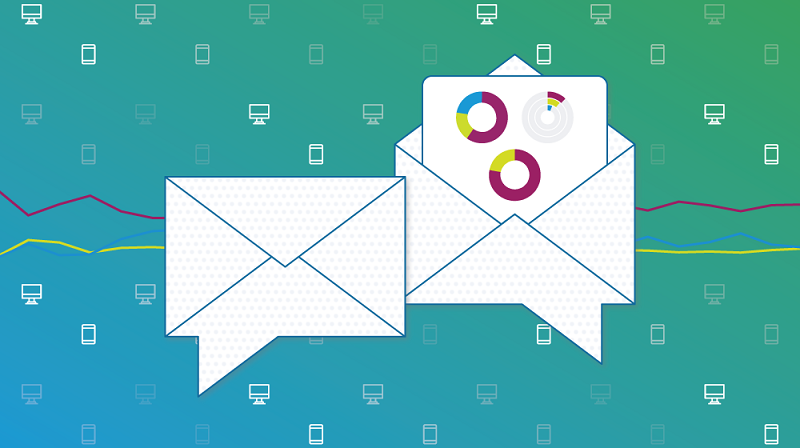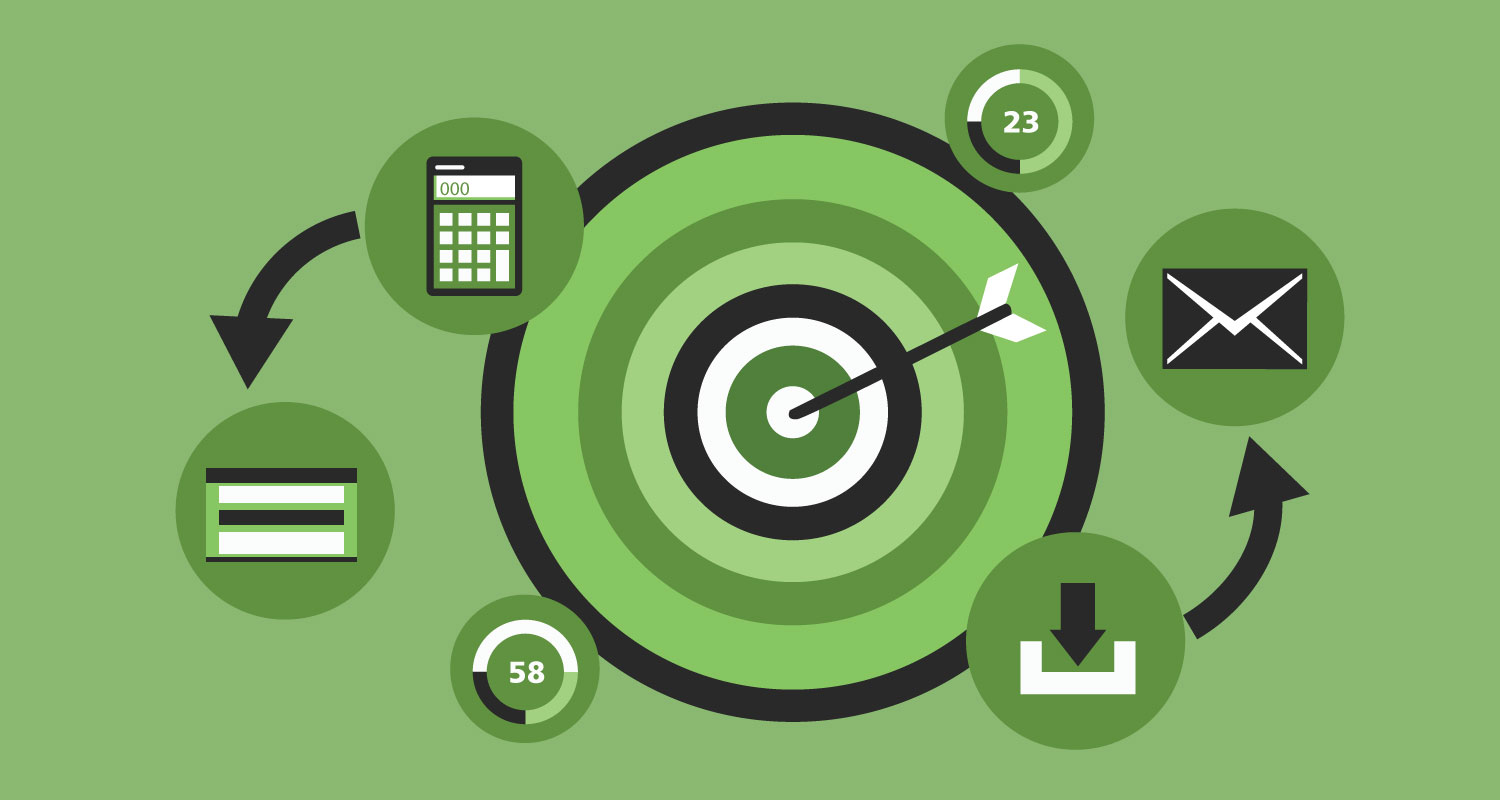Email marketing is a crucial facet of an effective digital marketing strategy, with 80% of retail professionals indicating that email is their most important contributor to customer retention. In order to use email marketing most effectively to boost conversion rates and increase your ROI, you must use a combination of the three most common kinds of emails:
- Promotional
- Relational
- Transactional
Here is a guide to help you understand what these categories entail and why you should invest in them, as well as a few bonus tips on how to use them effectively.
Promotional Emails
Promotional emails are one of the most important types of email marketing to increase ROI.
When imagining an email marketing campaign, promotional emails are probably the first type to come to your mind. As the name would imply, these emails are all about self-promotion of your brand. They contain a distinct call to action with the intention of converting your potential customer into a paying client.
The most important tip for crafting effective promotional emails is to personalize the content of the email as much as possible. This is a key tactic to use in all kinds of email marketing, but personalized emails receive 6x higher transaction rates, so it is a particularly vital strategy to use in promotional emails.
Here are a few of the most common kinds of promotional email marketing messages and why they are important:
1. Sales, discounts and freebies. These kinds of emails encourage potential customers to purchase your product or service through the promise of a deal. The hook for this email is a lower price or free item. You want to format these emails so they communicate your call to action quickly and concisely because many subscribers only give promotional emails a passing glance. To increase their effectiveness, these deals can also be used in combination with other types of promotional emails.
2. Email Exclusives. This is a particularly effective email marketing tactic because people love feeling like they are a part of a special group with opportunities others do not have. By sending your subscribers exclusive deals, invites and information, you show them why being a subscriber is valuable, while also increasing the likelihood that they will make a purchase.
3. Limited time offers. Emails containing limited time offers work on a similar logic to email exclusives because they capitalize on fear of missing out (FOMO), a psychological phenomenon that makes humans averse to loss. This impacts consumer behavior because you are more likely to purchase something that is available for a limited time out of fear that you will regret your decision not to purchase it in the future.
4. Brand announcements. These emails just announce a new product, service or event. The first step for getting any consumer to purchase your product or service is to make them aware of its existence, and these email marketing announcements help maximize the number of consumers aware of your brand’s offerings.
Conversion rates are further increased because many consumers like the idea of being the first to purchase a new product. This type of email can be paired with an “email exclusive” tactic to make it even more appealing to potential buyers. For example, your email recipients could get a “sneak peek” of a new product or event prior to its release to the general public, along with an exclusive coupon code sent to your most loyal subscribers.
Relational Emails
Relational emails are crucial to a successful email marketing strategy because they strengthen your relationship with your audience.
The second major category of email marketing is relational emails. Rather than directly encouraging a purchase, these emails deliver value up front with free content and information.
These emails are intended to strengthen the relationship between your business and your audience and reinforce the value in being your subscriber. This helps build brand awareness and allows your subscribers to connect with your brand in a more meaningful way, increasing brand loyalty and, indirectly, your ROI.
Here are a few of the most common kinds of relational emails:
1. A Newsletter. This is probably the most common relational email used in email marketing campaigns. Often, newsletters will contain promotional content, such as brand announcements and upcoming offers, but their primary purpose is to keep subscribers connected and engaged in the company.
Subsequently, newsletters also contain more general information about what your business has been up to, as well as some content that is purely of value to the reader. This valuable content may be in the form of product- or service-related advice, blog posts your business has published, or simply a link to an article you think your readers would find interesting. Creating a well-rounded newsletter will help build a relationship between your brand and your subscribers, keeping them invested in your future emails and more likely to increase your ROI.
2. Surveys. Sending your subscribers surveys is incredibly informative and often underutilized in email marketing campaigns. One of the most important tips for success is to personalize your emails as much as you can. What better way to get information about your potential customers than to simply ask?
Send your new subscribers a survey so that they can tell you a little bit about themselves. You don’t want to pry too deeply, but feel free to ask some general information such as their birthday, interests, what kinds of products or services they are looking for, what they hope to get out of their subscription, how they heard about your business, etc. This information can be super useful in generating personalized email content, which is more likely to result in a conversion. It also shows your subscribers that you want to get to know them and consider their preferences. Just remember: like most things in marketing, it is important to keep surveys short and sweet so that they are convenient and hassle-free for responders.
3. The Birthday Email. One great way to personalize your email marketing campaign using the information you collect in a survey is by sending a birthday email. Birthday emails feel very personal and help consumers build a deeper connection with your brand, plus they’re easy to automate using a third-party email marketing provider like MailChimp. These emails are most effective at increasing conversion rates when they give the receiver some sort of “gift.” This could be in the form of a discount code, access to an exclusive item or a freebie.
4. Re-engagement emails. Inevitably, you are going to end up with inactive subscribers who have not opened your emails for over six months. Figuring out who these subscribers are is why reviewing analytics is one of the most important tips for a successful email marketing campaign, and it’s also something you can set up in a system like MailChimp. For these subscribers, you want to send emails that address and try to solve their lack of engagement.
There are quite a few ways that you could go about this.
- You could ask your subscribers why they have been inactive and what you could do differently to get them engaged
- Offer them some sort of deal or freebie
- Highlight everything they’ve missed recently (and in doing so emphasize the benefits of paying attention to your emails)
You could also try a series of emails and utilize different strategies to see which is effective for that particular subscriber. Regardless of how you try to re-engage an inactive subscriber, it is important to know when to call it quits and remove them from your email list.
Transactional Emails
Transactional emails are often deprioritized in email marketing campaigns, but they can be a valuable marketing tool.
The third and final category that is key to a successful email marketing strategy is the transactional email. These are automated emails sent in response to some sort of interaction the consumer has had with your brand. Transactional emails are often undervalued in the goal of building brand loyalty and increasing ROI, but if used correctly they can help give a voice to your brand and be great builders of business-to-customer (B2C) relationships.
Here are a few of the most important types of transactional emails:
1. The Welcome Email. Welcome emails do a multitude of beneficial things for your email marketing campaign. They can be used to:
- Confirm that someone successfully subscribed to your emails.
- Give new subscribers their first taste of what the subscription entails by explaining how frequently they should expect emails and what kinds of emails they will receive.
- Highlight the value of your email subscription.
- Encourage your audience to connect with you on social media.
- Send new subscribers a survey so you can really get to know your audience. This will help you develop more personalized and subsequently more effective marketing emails in the future.
- Thank subscribers for signing up and give you the opportunity to give them a little gift for doing so!
Including all of this in one email might be a little bit overwhelming, so it is often a good idea to send a series of welcome emails that give and gather all of this information.
2. Order confirmations, purchase receipts, and shipping information. These transactional emails are automatically sent in response to the purchase of a good or service. While these are not prime emails to further your email marketing campaign, they are still great opportunities to showcase your brand and maintain a good relationship with your customers.
In addition to the necessary information, these emails could include a personal touch. For example, you could add a little note stating that you hope the buyer likes their new product. Personalizing these kinds of transactional messages help to maintain the relationship between you and your buyer. This encourages further engagement with your brand and may result in a repeat customer.
3. Follow up emails. These emails are automatically sent after a product has been delivered or service completed. Generally, follow up emails are simply used to ask your customers how they liked their purchase and gather testimonials. This aids your email marketing strategy because testimonials are some of the best marketing material available to businesses.
Follow up emails also give you the opportunity to encourage buyers to connect with you on social media and post about their experience with your business. Finally, they can be used to send buyers recommendations for additional products or services they may like based on their previous purchase.
Because follow up emails can be used in so many ways, a series of emails may be the most effective to avoid overwhelming the recipient. All of these strategies help to strengthen the relationship with the customer, increasing the likelihood that they will become a repeat customer and ultimately boosting your ROI.
By implementing and combining these different categories of emails, you can run an incredibly successful email marketing campaign that’s ideal for your brand.
______
by Emily Goldfarb
Source: business2community.com


